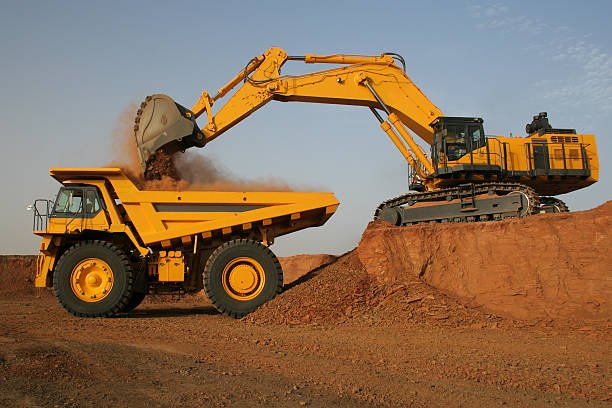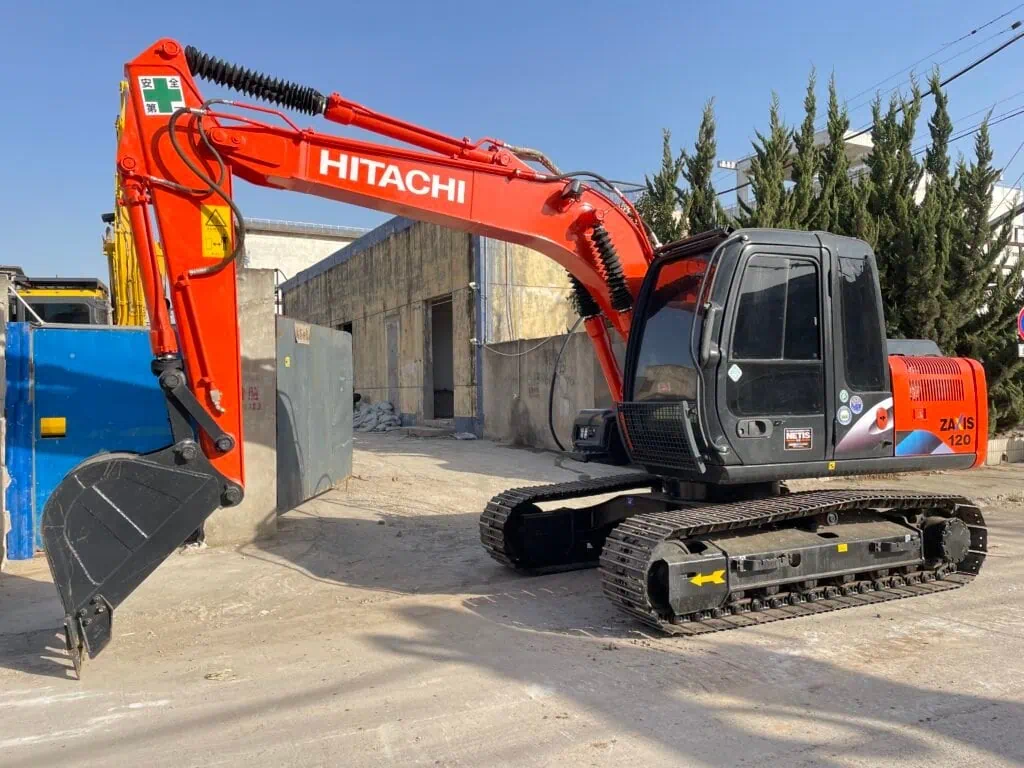Understanding how productividad de la excavadora impacts efficiency and project expenses is vital in any construction or excavation endeavor. The size of an excavator, usually determined by its weight, plays a significant role in its productivity. This blog will guide you through the performance ranges of various excavators, covering models from 6 tons up to those exceeding 50 tons. By the end of this piece, you’ll have a full grasp of excavator productivity and practical knowledge of how to assess it.

What is Excavator Productivity?
Excavator productivityrefers to the amount of material an excavator can move or process within a specified time frame, usually measured in cubic meters (m³) per hour. Several factors can influence this productivity, including:
- Excavator size and type: Larger excavators typically have higher productivity rates.
- Load and materials: Heavier or denser materials can slow down the work rate.
- Terrain conditions: Rocky or uneven ground may affect efficiency.
- Operator skill: Experienced operators can increase productivity by effectively managing loads and machine operations.
By understanding these variables, construction managers can choose the right excavator for their specific projects to optimize productivity.

Excavator Productivity Table
Excavator Type and Weight Class
To illustrate the productivity potential of various excavators, here’s a productivity table showcasing average rates based on size:
| Excavator Weight Class | Productivity (m³/hour) |
|---|---|
| Medium (6 to 10 tons) | 20 to 40 m³/hour |
| Large (11 to 50 tons) | 40 to 100 m³/hour |
| Heavy-Duty (Over 50 tons) | 100 m³/hour |
This table highlights how productivity increases with the size of the excavator. Medium excavators are ideal for smaller projects or tight spaces, while large and heavy-duty excavators can tackle more significant excavation tasks efficiently.

How to Calculate Excavator Productivity
Understanding how to calculate excavator productivity per hour can empower construction managers to select the appropriate machine based on project needs. Here’s how to approach theexcavator productivity calculation:
Step 1: Identify Key Metrics
To calculate productivity, you need to consider several metrics:
- Cycle time: The total time it takes to complete one full cycle of digging, swinging, dumping, and returning. This is typically measured in minutes.
- Capacidad de cubo: The amount of material the excavator can hold in its bucket, measured in cubic meters (m³).
- Operating efficiency: This accounts for how much of the time the excavator is actively moving material versus idle or traveling.
Step 2: Use the Formula
The formula for calculating excavator productivity per hour is:
Productivity (m³/hour)=(60Cycle Time (minutes))×Bucket Capacity (m³)×Operating EfficiencyProductivity (m³/hour)=(Cycle Time (minutes)60)×Bucket Capacity (m³)×Operating Efficiency
Example Calculation
Assume you have a large excavator with a bucket capacity of 1.5 m³, a cycle time of 1.8 minutes, and an operating efficiency of 75%:
- Calculate Cycles per Hour:
Cycles per Hour=601.8≈33.33 cycles/hourCycles per Hour=1.860≈33.33 cycles/hour
- Determine Productivity:
Productivity=33.33×1.5×0.75≈37.5 m3/hourProductivity=33.33×1.5×0.75≈37.5m3/hour
This calculation shows that the excavator can move approximately 37.5 m³ of material in an hour, demonstrating the importance of efficiency and size in excavation projects.

Manual Excavation Productivity vs. Excavator Productivity
While excavators significantly enhance productivity, it’s also worthwhile to compare them withmanual excavation productivity. Manual excavation typically yields much lower productivity rates due to the physical limitations of human workers. For example:
- Manual labor may achieve around 5 to 10 m³ per day depending on the circumstances, which pales in comparison to the productivity capabilities of even a small excavator.
- Excavadoras, on the other hand, can accomplish tasks in a fraction of the time, making them essential for large-scale projects.
Specific Excavator Productivity Insights
20 Ton Excavator Productivity
A 20-ton excavator strikes a balance between size and productivity, making it a popular choice for various construction applications. Typical productivity for this size ranges from 40 to 80 m³/hour, depending on site conditions and operator skill. It’s versatile enough for both residential and commercial projects, and its mobility allows it to operate effectively in limited spaces.
Mini Excavator Productivity
Mini excavators, typically weighing less than 6 tons, provide great utility for smaller tasks such as landscaping, utility installation, and tight access jobs. Their productivity may range from 15 to 30 m³/hour. While they may not match the capacity of larger machines, their compact size allows them to navigate confined areas where bigger excavators cannot operate.
Hydraulic Excavator Productivity
Hydraulic excavators are renowned for their power and efficiency. They utilize hydraulic systems to perform digging, lifting, and swinging operations, resulting in superior digging forces and faster cycle times. On average, hydraulic excavators can achieve productivity rates well above their weight class due to their advanced design and capabilities. Depending on size, their productivity can reach upwards of 100 m³/hour for heavy-duty models.
Factors Influencing Excavator Productivity
Several factors directly influence excavator productivity rate, which include:
1. Operator Skill Level
An experienced operator can significantly enhance productivity by optimizing the machine’s capabilities and managing cycle times efficiently.
2. Site Conditions
Excavators operate best on stable ground. Rocky or uneven terrain can slow down operations, while muddy or unstable conditions may require careful handling to prevent machine bogging.
3. Equipment Maintenance
Regular maintenance ensures that excavators are functioning optimally. A well-maintained machine will have fewer breakdowns and operate more efficiently, translating into higher productivity.
Conclusión
In closing, recognizing the productivity range of excavators, from 6-ton models to those exceeding 50 tons, is fundamental for construction projects. Excavator size is a key determinant of output, with larger machines often achieving greater productivity. By accurately evaluating productivity, contrasting manual with mechanical methods, and considering different influencing aspects, stakeholders can make well-informed choices about which excavator type to use.
If you’re looking to optimize your next excavation project, consider the productivity capabilities of different excavator models and how they align with your specific project needs. Always remember that proper planning, assessment, and operator training are integral to achieving maximum productivity on-site.






